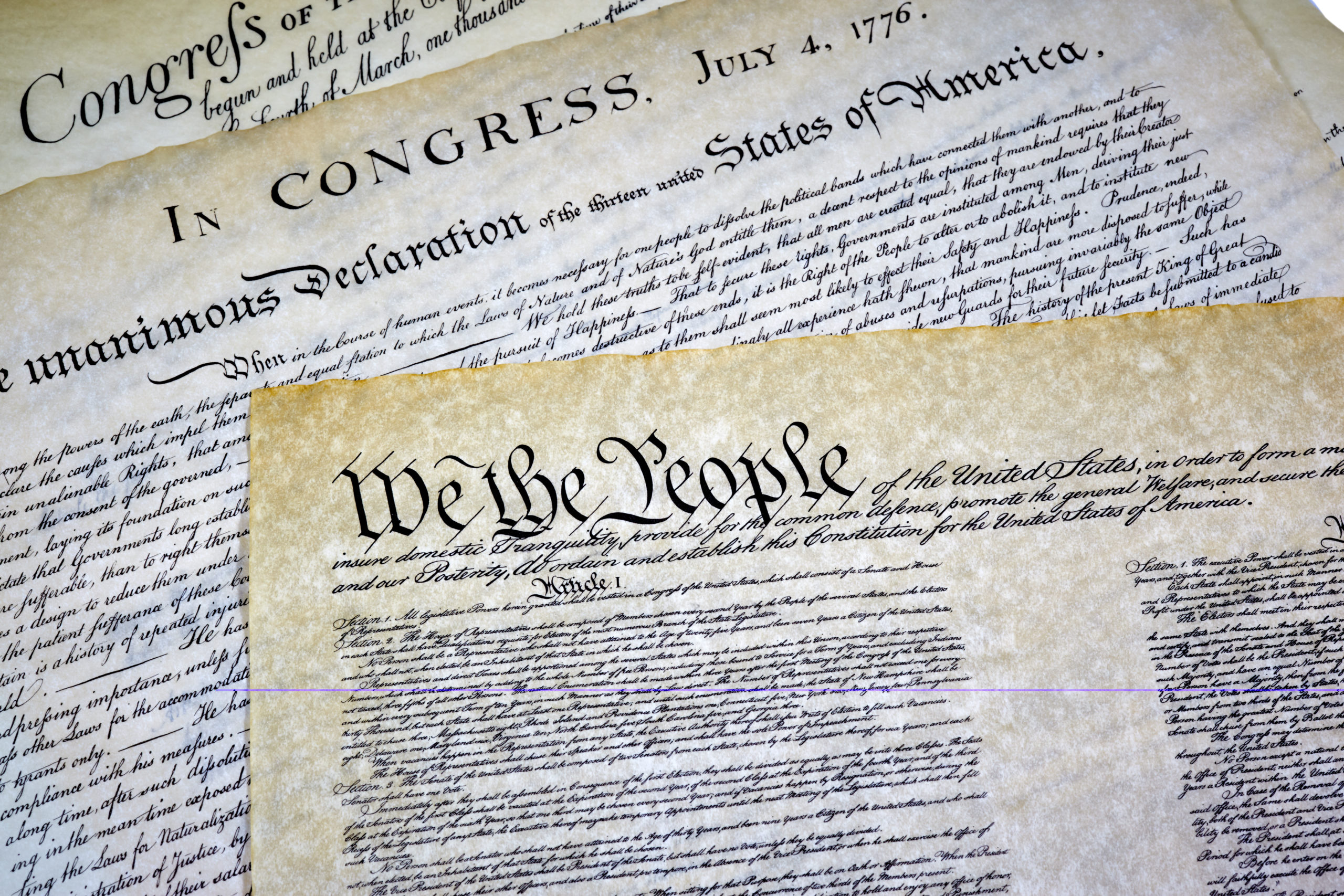

RECOMMENDED READING
Postliberalism and pornography are independently controversial subjects—so perhaps I should have thought twice before conjoining them in a semi-snarky, slightly ambiguous tweet, which sparked a number of strong reactions:
That a liberal columnist at a liberal newspaper did more to restrict pornography than every postlib put together reflects an intrinsic limitation of postliberalism: its contempt for the institutions actually set up to make a difference. https://t.co/BpEQynwXMk
— Aaron Sibarium (@aaronsibarium) December 9, 2020
The context for the tweet was a widely-shared New York Times essay about the deluge of child porn that’s ended up on Pornhub, and the sudden action it generated from the site’s executives. Four days after Nicholas Kristof published the piece, Pornhub’s parent company, MindGeek, announced that it would create an entirely new team of moderators to review and remove “potentially illegal material,” ban downloads (so that removed content doesn’t return), and change its upload policies (so that only verified users can post videos)—by far the most comprehensive crackdown in the site’s history. Shortly thereafter, it purged all existing videos from unverified users, wiping out at least half its erstwhile offerings if not more. Meanwhile, Mastercard and Visa both announced that they were ending the use of their cards on Pornhub in response to the exposé, and other companies may yet follow suit.
The changes aren’t a silver bullet, and, as Kristof notes, much will depend on how they’re implemented. But the process by which they came about still seems significant, insofar as it reflects the continued importance—and perhaps preeminence—of liberal institutions in American life. The New York Times is no longer “the” paper of record (partly due to its own choices), but in an era of consolidated media, it still exerts substantial sway over public discourse, and by extension over corporate behavior. Indeed, on the evidence of Kristof’s column, it seems more capable of reining in Big Porn’s worst excesses than the non-liberal publications that have pursued the issue for years, usually to no avail.
My point in describing the New York Times as “liberal” is not that it is left-wing, although it is that. I mean the term in both a functional and philosophical sense. Functionally, the Times plays an important role within the system we call liberal democracy, supplying voters and policy-makers with information that (at least theoretically) constrains the unaccountable exercise of power, public and private. Philosophically, the Times has an institutional commitment to some form of liberal governance, albeit one that’s been eroded by its staffers’ iconoclasm, their belief that oppression “is in everything.” That belief has prompted some illiberal editorial decisions, no doubt, of which the Tom Cotton imbroglio was just one example. But it hasn’t resulted in a coherent attack on liberalism itself, which (to many a Marxist’s chagrin) remains the paper’s officially preferred form of government.
Conservative critics of liberalism realize this, but they also realize that Iiberal institutions have lurched left and become more actively hostile to the right. So, they reason, maybe the hostility arises from liberalism itself, in which case there’s no point in playing by the system’s rules or within the confines of its institutions. Instead, conservatives should treat the establishment as essentially illegitimate, and, in the words of one would-be insurgent, adopt an attitude of “war and enmity” toward it.
The problem is that by taking this attitude, conservative postlibs have set themselves against the institutions best situated to move public policy and shape public opinion. Wielding power, which liberalism’s critics claim to want, requires some engagement with the levers of power as they actually exist today, and it’s not clear how all-out war with them achieves that. Especially on an issue like pornography, where guilt and diffidence often stifle debate, you need mainstream outlets to legitimize the conversation and convince people it’s worth caring about—because otherwise it ends up ghettoized in self-referential rebeldom, comfortably ignored by the system writ large.
My non-liberal followers, and even some of my liberal ones, did not buy this argument. Having now elaborated it in more than 280 characters, let me offer some replies to the more thoughtful objections I received.
Objection 1: Postliberals don’t want to destroy or disengage from these institutions. Like the student movement of the 60s, they want to capture and transform them— precisely because they understand their power.
Ross Douthat, channelling Adrian Vermeule, made a version of this point. I would say three things in response.
First of all, yes, it’s true some postliberals want to do this. But others seem more focused on either destroying liberal institutions or building up parallel, nonliberal ones, in the hope of eventually supplanting liberalism. Still others vacillate between destructive and transformational tendencies, between pompous putsch and silent subterfuge—and the resulting incoherence tends to bias postliberalism toward a negative self-definition, in which the movement’s content becomes coterminous with its enemies.
Second, none of these plans is likely to work. Beyond the numerical hurdles facing postliberals (all 3,000 of them, on Twitter), the cultural and demographic distinctives of the United States create selective pressures for liberalism. America’s anglo settlers brought with them a set of folkways and theologies that, in David Hackett Fischer’s famous words, helped the nation remain “stubbornly democratic in its politics, capitalist in its economy, libertarian in its laws and individualist in its society,” for good and ill. Another liberalizing pressure is America’s size and diversity, to which (classical) liberalism can be understood as an institutional solution, an emergent governing technology. Both forces, the cultural and the compositional, stack the deck against postliberalism in the United States. Which means postliberals may do more good by working within liberalism’s ambit, toward modest and achievable goals like pornography regulation, than by tethering those goals to an ambitious project of regime change—even if their ideal regime would (in principle) do the most good of all.
Finally, I would just note that the “seize the institutions” line seems rather self-defeating on its own terms. Unless there is a large, silent brigade of bureaucrats working to transform liberalism from within, it’s not clear how some very loud, Very Online intellectuals are supposed to infiltrate a system whose downfall they are publicly plotting. This is a performative contradiction in more than one sense—and on matters of great moral urgency, the performance hasn’t spurred much progress, certainly not as much as the New York Times just did.
Objection 2: That Pornhub, Visa, and Mastercard all responded in lockstep to the New York Times just proves the postliberals right. It suggests that mainstream institutions, while officially independent from one another, in practice function as a hegemonic monolith, crowding out diversity and dissent. Dissenters should therefore aim at the destruction those institutions if they want any meaningful change.
One might reply to this objection in two different ways.
The first and slightly uncharitable reply is that what happened after Kristof’s column accords with liberal priors as much as postliberal ones. Maybe Pornhub and Mastercard alike regard the media as their true sovereign, and this whole incident illustrates the distributed despotism of the liberal order…or maybe Kristof went viral, raised awareness about an important issue, and, though a combination of the free press and the free market, pressured the companies to act. What happened is only evidence of postliberal criticisms if those criticisms are assumed to be true—so from a liberal perspective, this objection just begs the question.
Of course, from a non-liberal perspective, so does this reply. If you assume good faith and institutional independence, then sure, the Kristof-Pornhub saga looks like a victory for liberalism. If you assume the opposite, however, it looks more like coordination or dictation, an exercise of power by people with far too much of it.
But that power has its limits—and the second, less question-begging reply to the objection is simply is that it ignores them. Left-of-center outlets may move left-of-center businesses, but outside the Acela corridor their influence is much more modest, and in certain ways it has diminished. The death of print means that publications like the Times have fewer competitors than they used to, but they also cater to an increasingly homogenous subscriber base, which represents a small and unpopular fraction of the country. Even among rank-and-file Democrats, it’s not clear how much sway these outlets actually have: consider that the two candidates endorsed by the Times in the Democratic primaries, Elizabeth Warren and Amy Klobuchar, together received less than 10 percent of the total delegates.
Beyond mere apathy, there is also an active and justified distrust of mainstream reporting on the part of many Americans, who correctly perceive that the media suppresses stories inhospitable to the dominant narrative, often with the help of big tech. That suppression certainly plays a role in consensus-shaping among elite actors—and elite consensus certainly has real-life consequences, as Kristof’s column demonstrated—but it is not tyrannical to the degree implied by its critics, nor is it evidence of coordination so much as in-group bias. This weakens the case for total war against mainstream institutions, and suggests the right can use their influence strategically without signing a political death warrant. At the very least, it should temper the tone in which concerns about that strategy are expressed.
Objection 3: The liberal frame of Kristof’s column, which focused only on consent, validates the pathologies that gave rise to Pornhub in the first place, even if it yields narrow, short-term wins.
This objection, for which I have considerable sympathies, turns on an early passage in Kristof’s piece:
The issue is not pornography but rape. Let’s agree that promoting assaults on children or on anyone without consent is unconscionable. The problem with Bill Cosby or Harvey Weinstein or Jeffrey Epstein was not the sex but the lack of consent — and so it is with Pornhub…. It should be possible to be sex positive and Pornhub negative.
Throughout the essay but especially here, consent serves as the master morality, the only thing separating good from evil. Needless to say, this idea has played a central role in the normalization of pornography, and in the spread of its most vicious forms. Also, it just isn’t true: consent is not a sufficient basis for sexual ethics, as I’ve argued on this blog before, let alone for ethics in general—yet Kristof’s publication has done all in its power to convince readers otherwise. Between 2015 and 2020, the Times published at least one paean to polyamory each year, and on April 10, two months into the coronavirus pandemic, it published a piece about the cam models practicing “sexual distancing,” a downright dystopian term whose invention should send chills down your spine.
So yeah: liberal institutions have validated the pathologies that gave rise to Pornhub, and so, in certain ways, did Kristof’s essay.
But that is part of why it was effective. Kristof worked within the normative framework to which most businesses, including Pornhub, tacitly subscribe—and that meant he couldn’t be dismissed as a prude, a scold, or a reactionary. He argued in terms left-liberals and right-liberals could both understand, without appealing to sacredness or virtue or some other contested concept; no surprise, then, that they found little to contest.
The piece was also effective because of the way its content undermined its caveats. Though Kristof appealed to left-liberal values and drew a distinction between porn and Pornhub, the story he told made those values seem naive, and the distinction derived from them tenuous. By his own admission, the problem is structural: Even if “Pornhub curated videos more rigorously,” as it’s now promising to do, “the most offensive material might just move to the dark web or to websites in less regulated countries”—implying an essential, ineliminable connection between online porn and its worst embodiments. It was, despite its framing, an anti-porn piece.
And that mismatch between intent and effect gave Kristof a credibility most conservative journalists wouldn’t have had—because, unlike many conservatives, Kristof doesn’t think porn use is inherently immoral, doesn’t think its production is always exploitative, doesn’t think sex positivity has been a disaster for the human race, doesn’t think Onan did anything wrong. So if even he agrees Pornhub is bad, it signals to skeptics that there’s a there there, that he isn’t skewing his reporting for partisan ends, and that in this particular instance, the conservative scolds have a point. (By the same token, when a pro-Trump columnist presents evidence against Trump’s voter fraud claims, it should theoretically shift one’s priors more than if the evidence were presented by an anti-Trump columnist, whose incentive to cherrypick is quite strong.)
Kristof’s essay thus hints at a broader dilemma for the right: appealing to liberalism’s values is often the quickest, most efficient way to improve liberal society—but it can also have the effect of reifying those values, and the constraints on thinking they engender. How you evaluate that trade-off in any given case will depend both on the seriousness of the issue and on the poverty of the values being invoked. I agree with postliberals about the second variable, but would implore them to consider the first. The issue Kristof raised is very serious, and the value system he called on—impoverished and incoherent though it may be—does seem capable of addressing it to a non-trivial extent. Even if those capabilities are limited, the fact remains you can’t curb porn without elite buy-in, and most elites are either liberals, leftists, or both.
Unless that changes—and it won’t—you’ll need to convince at least some New York Times readers that there is a non-reactionary case against porn, intelligible from within liberalism, that it is not prudish or paternalistic to make. The Overton window for making it is wider now because of Kristof. Conservatives owe him their thanks.
Recommended Reading
Republicans, Democrats, and Definitions
Anyone who cannot stand the phrase, “Actually, America is a republic,” had best stop reading now. This post is not for you. Except ye be converted, and become as little Read more…
Who Are College-or-Bust Charters Really For?
In a recent post, Chris Arnade compared the American education system to strip mining, an analogy that Patrick Deneen uses in his book Why Liberalism Failed. A similar analogy comes Read more…
Post-Liberal America
Today’s upsurge in Catholic integralism is a one of the many signs of growing dissatisfaction with liberalism’s efforts to keep metaphysics out of public life.













